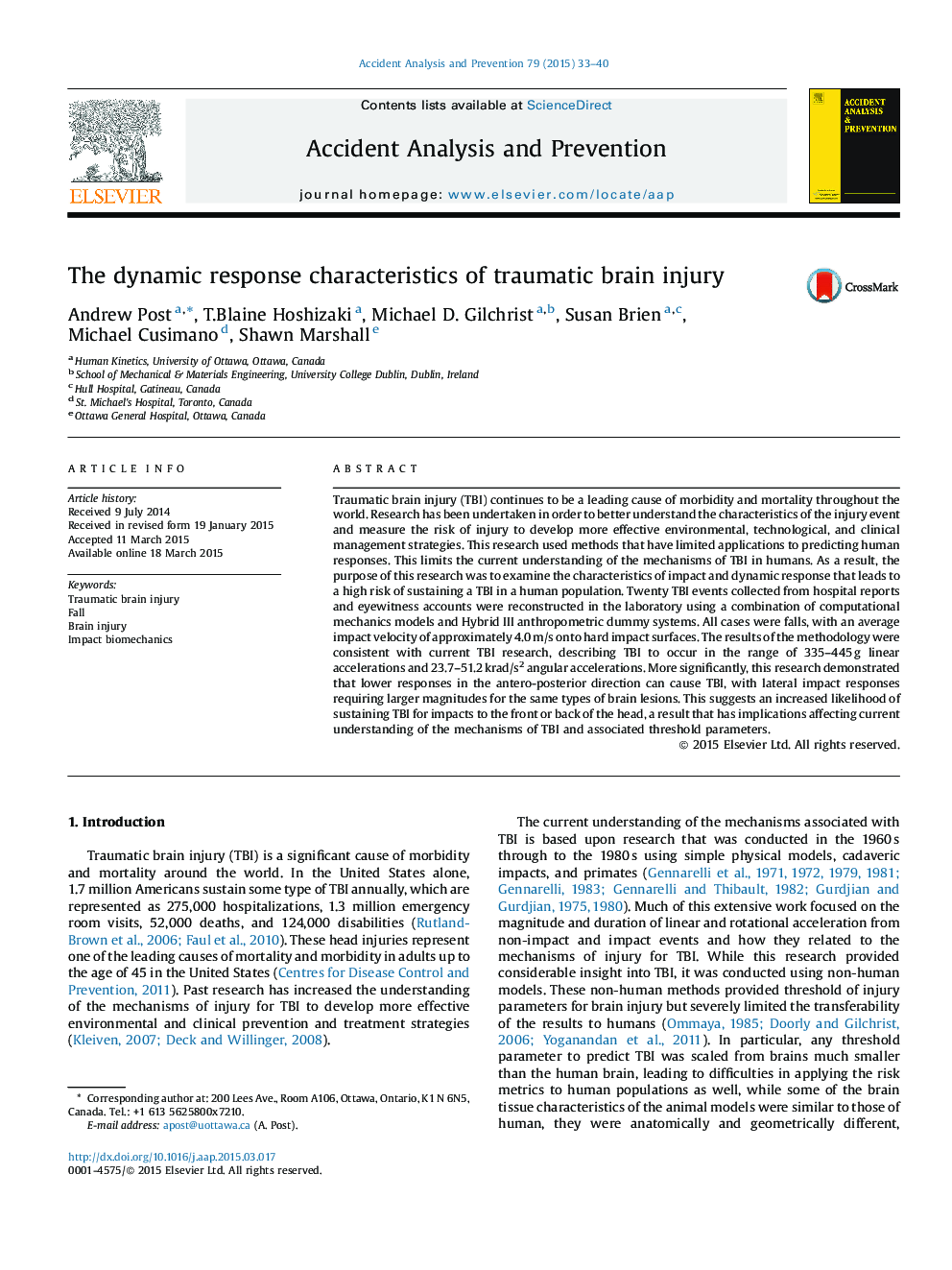| Article ID | Journal | Published Year | Pages | File Type |
|---|---|---|---|---|
| 572162 | Accident Analysis & Prevention | 2015 | 8 Pages |
Abstract
Traumatic brain injury (TBI) continues to be a leading cause of morbidity and mortality throughout the world. Research has been undertaken in order to better understand the characteristics of the injury event and measure the risk of injury to develop more effective environmental, technological, and clinical management strategies. This research used methods that have limited applications to predicting human responses. This limits the current understanding of the mechanisms of TBI in humans. As a result, the purpose of this research was to examine the characteristics of impact and dynamic response that leads to a high risk of sustaining a TBI in a human population. Twenty TBI events collected from hospital reports and eyewitness accounts were reconstructed in the laboratory using a combination of computational mechanics models and Hybrid III anthropometric dummy systems. All cases were falls, with an average impact velocity of approximately 4.0Â m/s onto hard impact surfaces. The results of the methodology were consistent with current TBI research, describing TBI to occur in the range of 335-445Â g linear accelerations and 23.7-51.2Â krad/s2 angular accelerations. More significantly, this research demonstrated that lower responses in the antero-posterior direction can cause TBI, with lateral impact responses requiring larger magnitudes for the same types of brain lesions. This suggests an increased likelihood of sustaining TBI for impacts to the front or back of the head, a result that has implications affecting current understanding of the mechanisms of TBI and associated threshold parameters.
Related Topics
Physical Sciences and Engineering
Chemical Engineering
Chemical Health and Safety
Authors
Andrew Post, T.Blaine Hoshizaki, Michael D. Gilchrist, Susan Brien, Michael Cusimano, Shawn Marshall,
